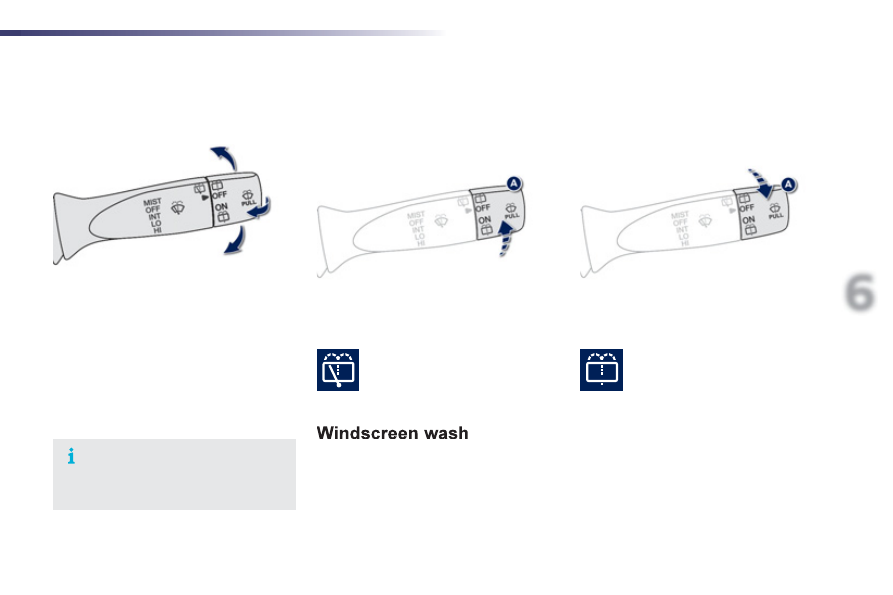Peugeot 107 (2012 year). Instruction - part 4

6
47
Visibility
Windscreen wiper stalk
Pull the wipers stalk towards you.
Rear wiper and
wash-wipe
Turn it forwards to trigger the wash
during wiping.
Rear wash
Turn it towards you to trigger a wash
operation.
MIST
Single wipe.
For a single wipe of the windscreen,
push the control upwards then release it.
OFF
Off.
INT
Intermittent wipe.
LO
Normal wipe (moderate rain).
HI
Fast wipe (heavy rain).
In winter, you are advised to wait until the
windscreen has been defrosted fully before
operating the windscreen wiper stalk.
When using a car wash, switch off the
ignition and ensure that the wiper blade
is in the low position.
Turn ring A to "ON" for a steady wipe.
Ring A at "OFF" (wiper off).
Windscreen wiper